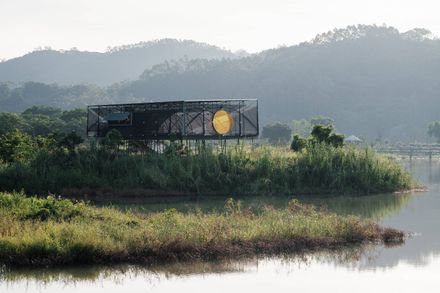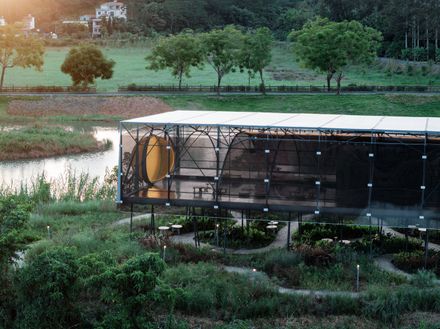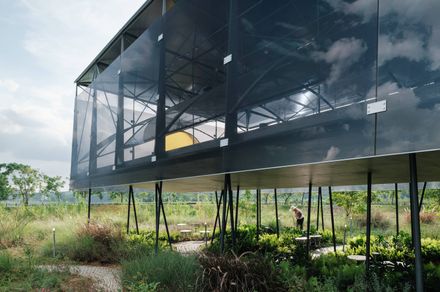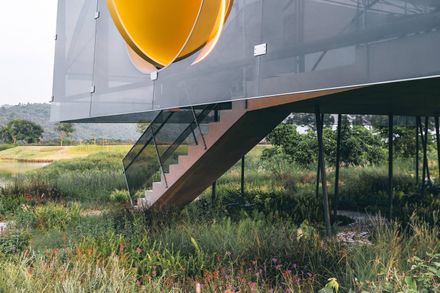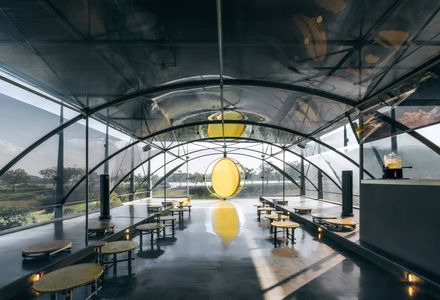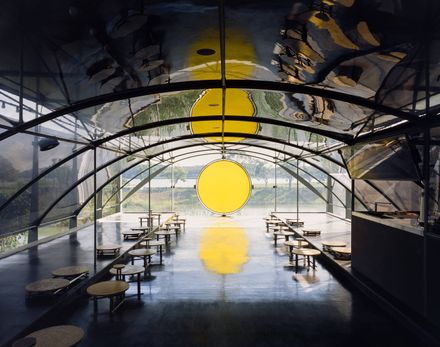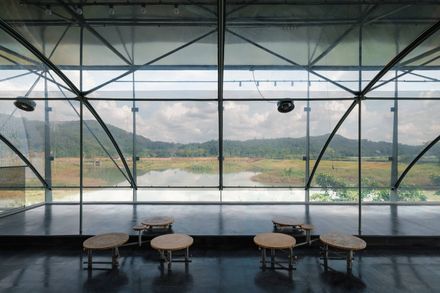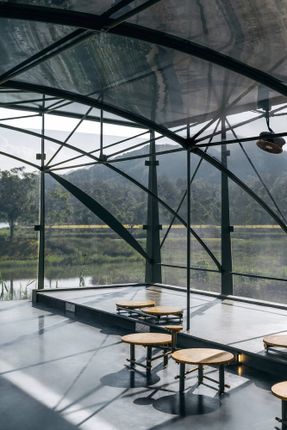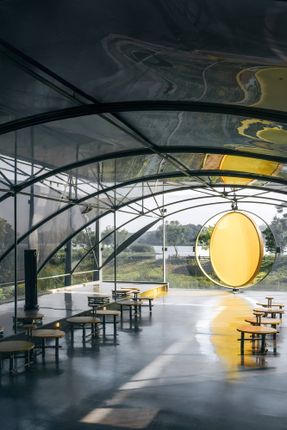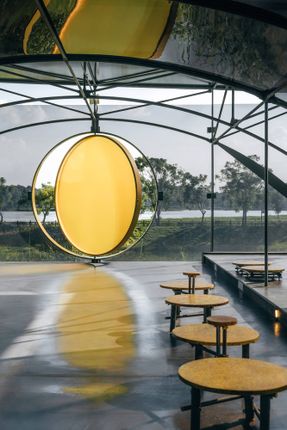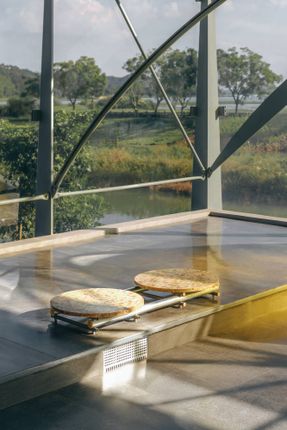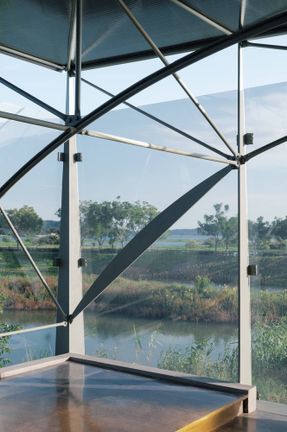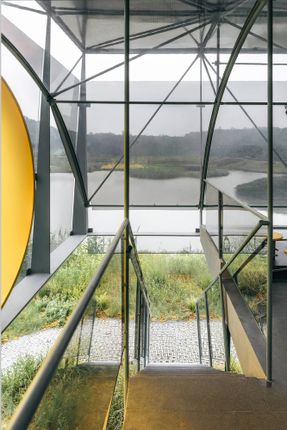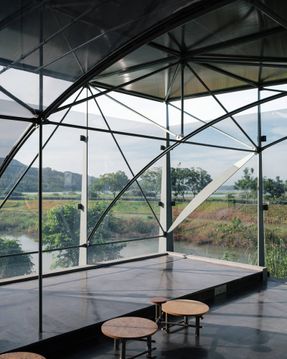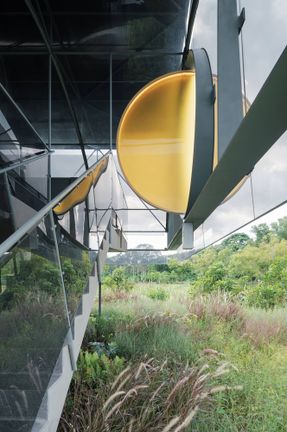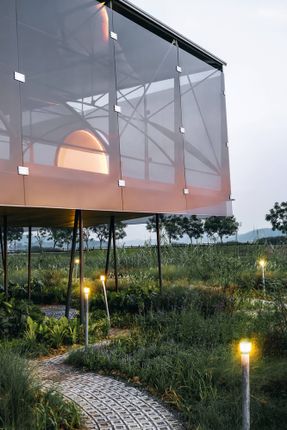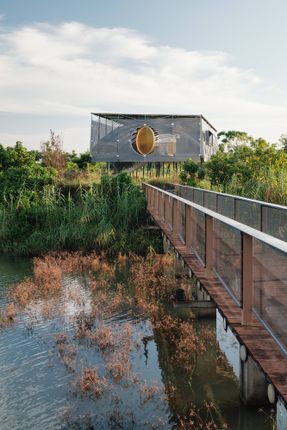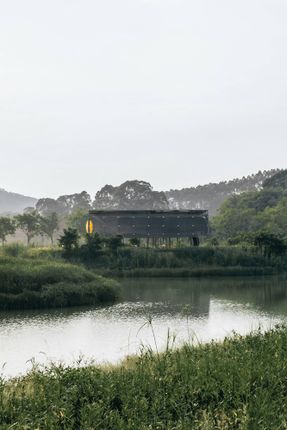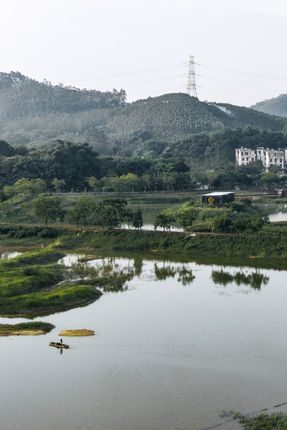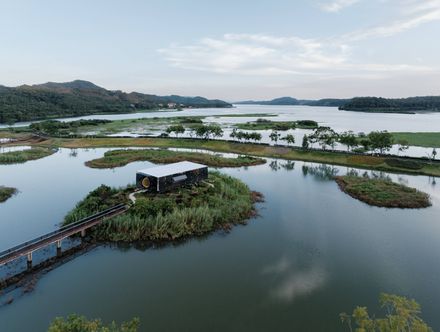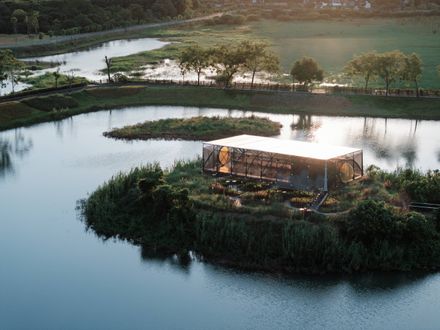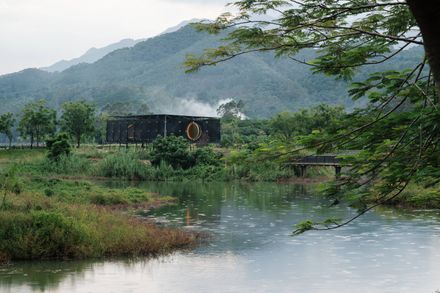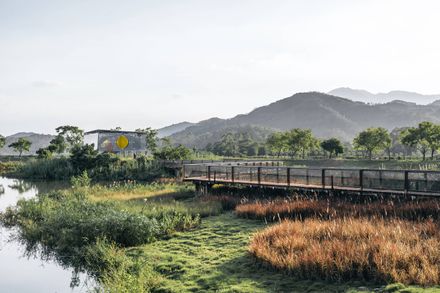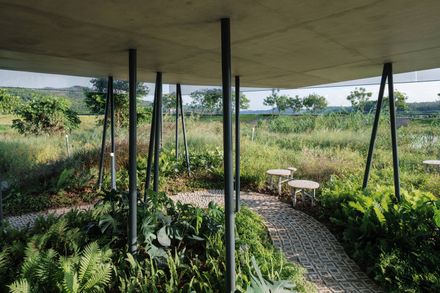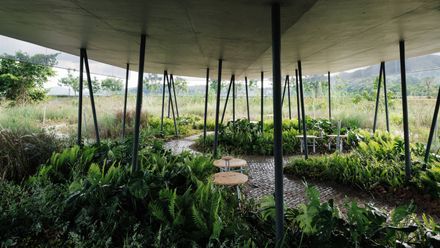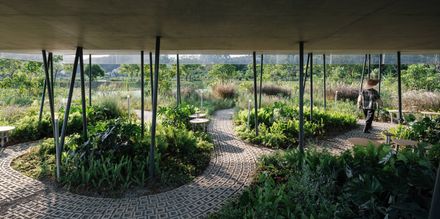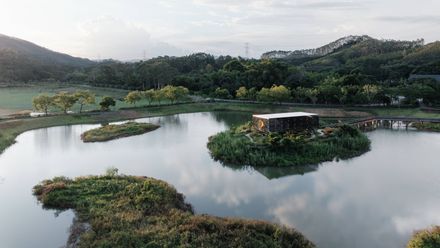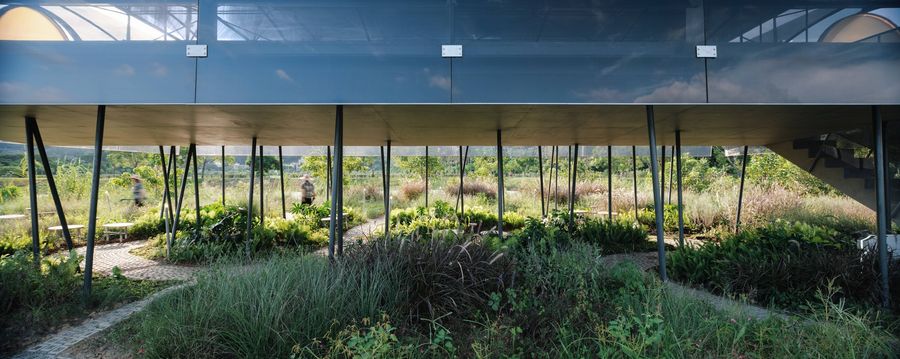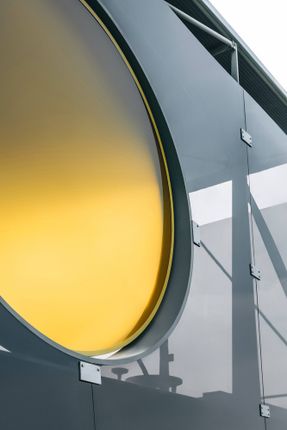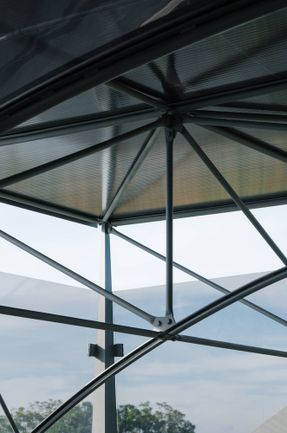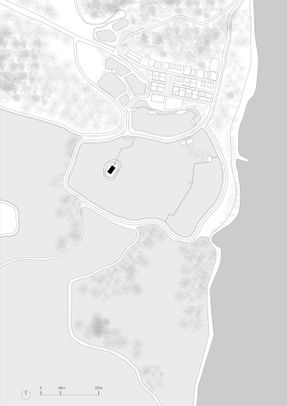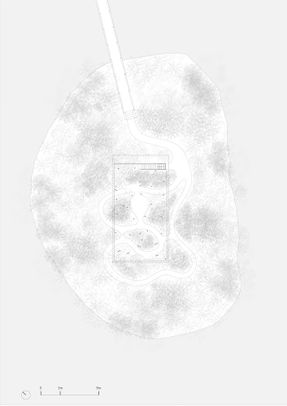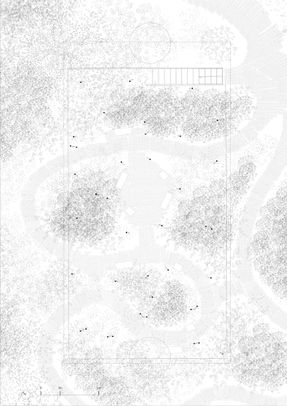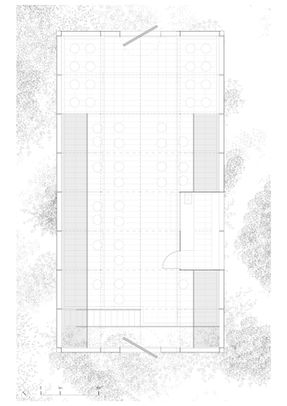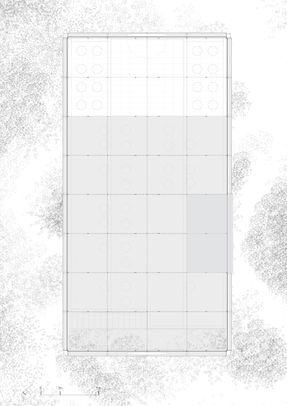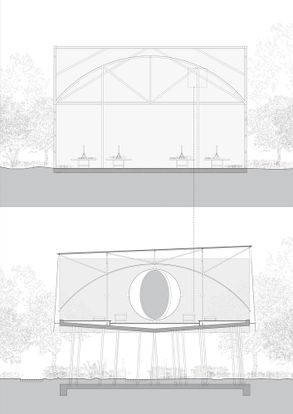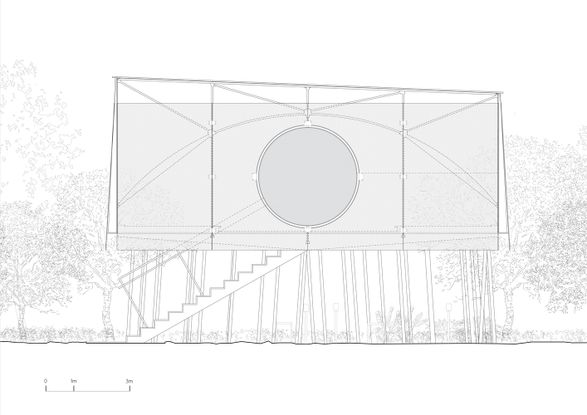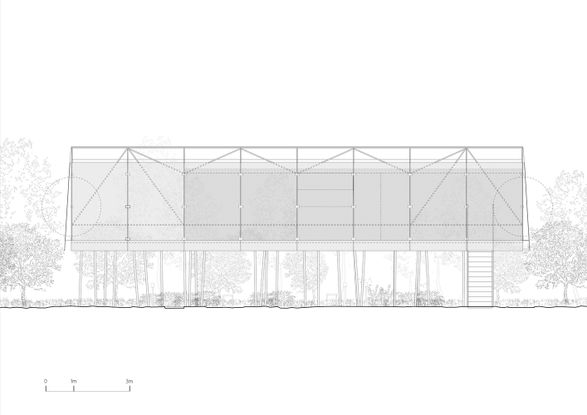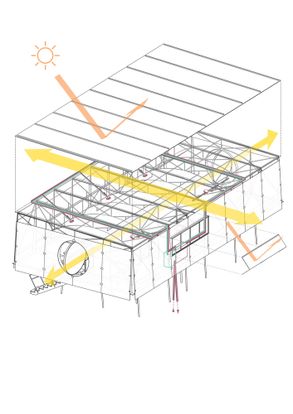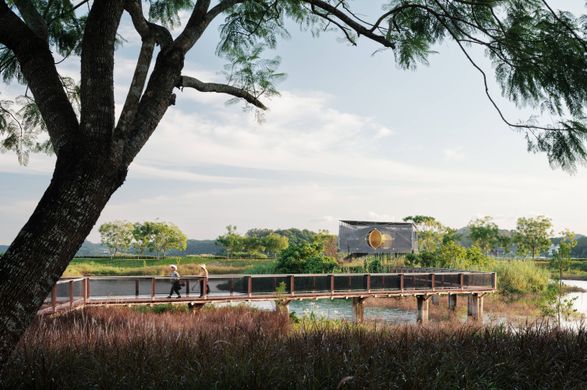
MOON PAVILION
Atelier Guo
ARCHITECTS
Atelier Guo
LEAD ARCHITECT
Guo Liaohui
STRUCTURAL DESIGN
Zhang Zhun + And Office
SUSTAINABILITY CONSULTANT
Atelier Li Yin
PROJECT ARCHITECT
Xu Peiyao
SITE ARCHITECT
Xu Peiyao
MANUFACTURERS
SHANGHAI HUILI-TUVGAL SHEETS CO., LTD.
CLIENT
Shanghai Fengyuzhu Culture & Technology Co., Ltd..
MAIN CONTRACTOR
Sichuan Jiangren Qingshui Labor Co., Ltd., Guilin Mingxin Exhibition Co., Ltd.
DESIGN TEAM
Guo Liaohui, Xu Peiyao, Wang Wenkai, Xu Yanjun
ARTISTS
Gao Meilin, Xu Gang
PHOTOGRAPHS
Hao Chen, Yumeng Zhu
AREA
120 m²
YEAR
2025
LOCATION
Huizhou, China
CATEGORY
Pavilion
The "Moon Pavilion" was conceived in response to an ancient Chinese verse depicting a poet, intoxicated and smiling amid a field of flowers.
Rather than translating this imagery literally into architectural form, the designers used an abandoned greenhouse as their point of departure, layering onto it abstractions and recombinations of spatial and figurative motifs—water, moon, flower, and boat.
MOON
The idea of the "moon" is closely tied to the literary trope of "drinking and composing poetry." In the pavilion, it takes the form of a rotatable art installation on one façade of the pavilion, acting as a medium that links different perceptual scales.
At a distance, the "artificial" moon of the installation and the "real" moon are both reflected in the pond surrounding the pavilion. Walking slowly along the water's edge, the pavilion's silhouette itself recalls the moon rising over the horizon.
GREENHOUSE
A crucial starting point for the design was the decision to preserve the structural, spatial, and material language of the greenhouse.
Its lightweight pin-jointed structure carried the character of temporary, makeshift agricultural construction. Its configuration—a flat upper layer and an arched middle layer, clad in polycarbonate panels shaded by black netting—gave the interiors a distinctive semi-transparent quality.
The new two-story pavilion evokes a similar atmosphere, reinterpreting the proportions of the original structure and the articulation of its connections.
BOAT
The pavilion expands the footprint of the greenhouse from a single story into two, opening views toward a distant water reservoir and freeing the ground-level space.
The second-floor concrete slab acts like a raised ground plane—a solution inspired by the temporary supports used to lift boats above water during the dry season.
The slab is supported by dense, seemingly irregular steel columns, which conceal water and electrical services.
The shallow V-shaped slab of the first floor reinforces the impression of a boat's hull, creating a striking contrast with the lightweight roof above. By raising the roof truss higher, the new structure improved lateral stability while strengthening the allusion to a boat.
GREEN ISLAND
Although the physical structure of the greenhouse was not preserved, its function of cultivating flowers was carried forward.
The design dissolves the sharp indoor-outdoor boundary of the greenhouse, allowing plants to spill naturally from the pavilion into the surrounding landscape.
A gradient unfolds—from shade-tolerant species beneath the slab to the existing vegetation beyond—forming a loose, living "edge" that offsets the geometric precision of the architectural volume.
SUNGLASSES
To evoke the atmosphere of the greenhouse and respond to the site's agricultural context, the pavilion is clad in dark polycarbonate panels, appearing from afar like a pair of "sunglasses."
This dark skin accentuates the brightness of the moon installation by day, while giving the building a literal transparency that makes its structural layers legible. Steel members are distinguished by color, clarifying the hierarchy of the frame and reinforcing the overall expression of transparency.
The semi-transparency of the cladding also posed thermal challenges. These were addressed through integrated strategies—passive ventilation, shading, and mechanical mist fans.
With simulation and calculation by sustainability consultants, the pavilion achieves an environmental balance with the outdoors, relying primarily on air movement to ensure comfort.

